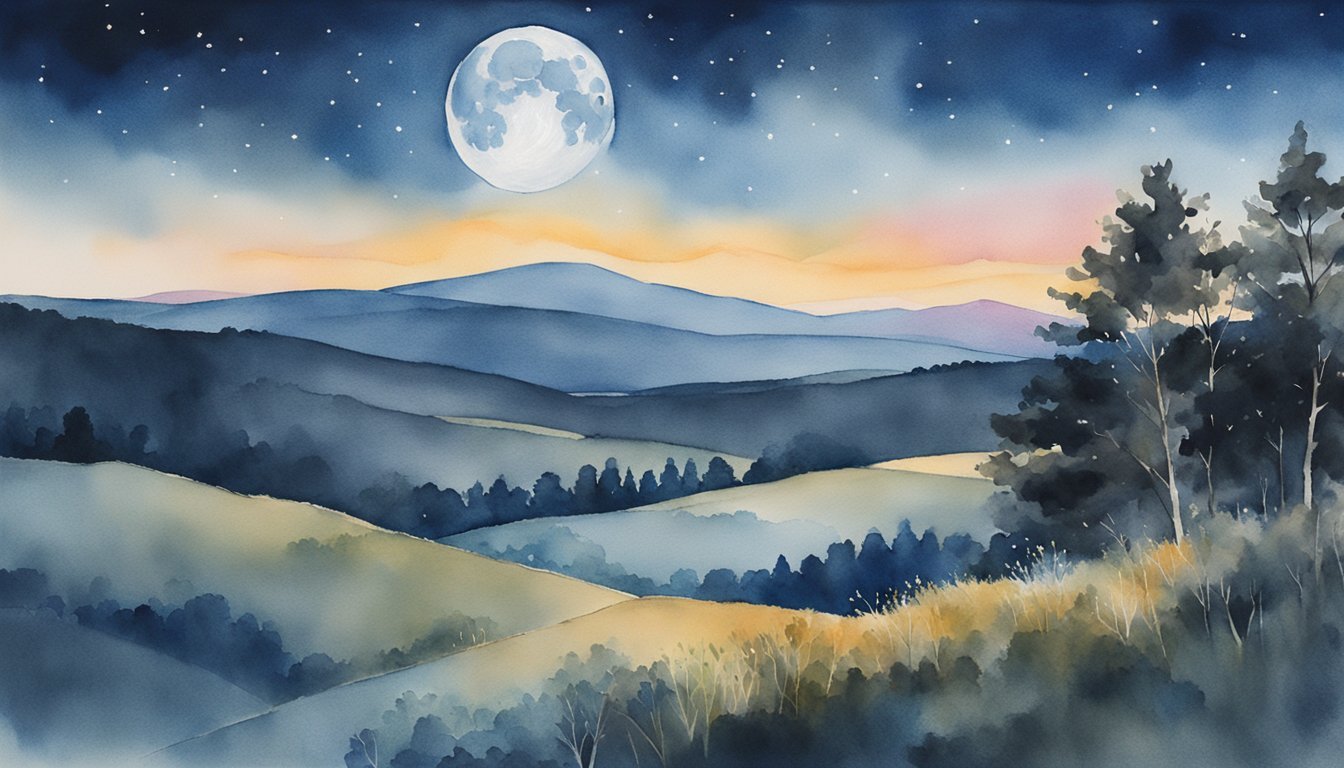Understanding the Super Blue Moon
A Super Blue Moon is a celestial event that marries the occurrence of a Supermoon and a Blue Moon, drawing the eyes of astronomy enthusiasts and sky watchers alike. This section dissects the elements that make up this rare lunar spectacle.
Supermoon Phenomenon
The term “Supermoon” refers to the moment when the moon is at its closest point to Earth in its orbit, a position known as perigee. When a full moon coincides with perigee, it appears larger and brighter in the sky. These Supermoons occur approximately three to four times a year, with variations in frequency and apparent size based on the moon’s cycle and its elliptical orbit.
What is a Blue Moon?
The phrase “once in a blue moon” arises from the rarity of a Blue Moon, which is the name given to the second full moon in a calendar month, called a monthly Blue Moon, or the third of four full moons in a season, called a seasonal Blue Moon. Typically, there’s one full moon each month, but the lunar cycle doesn’t align perfectly with our calendar months, leading to the occasional two full moons appearing within the same month.
The Rarity of a Super Blue Moon
Combining a Supermoon with a Blue Moon results in the Super Blue Moon, an event that is quite unusual. This is due to the infrequent nature of both the Supermoon and the Blue Moon occurring in conjunction. A Super Blue Moon last graced the skies in 2018 and is not expected to appear again until around 2037. The interval between such occurrences can vary widely, demonstrating the unique choreography of the Earth-Moon celestial dance.
Observing the Super Blue Moon

When the Super Blue Moon graces the night sky, it presents a unique opportunity for skywatchers. During this event, the moon appears bigger and brighter than usual. Observing this celestial phenomenon can be an exhilarating experience with the right approach and equipment.
Best Practices for Moonwatching
For those who plan to observe the Super Blue Moon, visibility is best when the moon is positioned above the horizon. The contrast between the moon and the sky makes it stand out more clearly, enhancing its perceived size, a result sometimes referred to as the moon illusion. Using a telescope or binoculars can vastly improve the viewing experience, allowing one to see the moon’s features in greater detail. Moreover, scheduling the observation during the moonrise or moonset, which coincides with sunset and sunrise, can add a picturesque quality to the experience.
Astrophotography Tips
For those enthusiasts who wish to capture the Super Blue Moon through astrophotography, using a camera with a decent zoom capability is crucial. Starting from a tripod will stabilize the camera for clear, sharp images, and experimenting with various shutter speeds can help to achieve the desired effect. With the moon being brighter, a lower ISO can be used to prevent overexposure. Enthusiasts can also seek guidance from online communities like the Virtual Telescope Project that share tips and celebrate achievements in astrophotography.
Upcoming Super Blue Moons
The Super Blue Moon is a rare calendar month event where a second full moon, known as a Blue Moon, coincides with its perigee, the point where the moon is closest to Earth, referred to as a Supermoon. The last one dubbed the Sturgeon Moon occurred in August 2023, as noted on NASA’s website. Following the lunar calendar, one can anticipate the next occurrence by tracking the dates of full moons and keeping an eye on the night sky, especially since these events aren’t as frequent as one might think – the time between super blue moons can be quite irregular. Space enthusiasts and skywatchers keen on witnessing this event should mark their calendars and stay updated with reliable sources like Space.com for accurate celestial event schedules.

